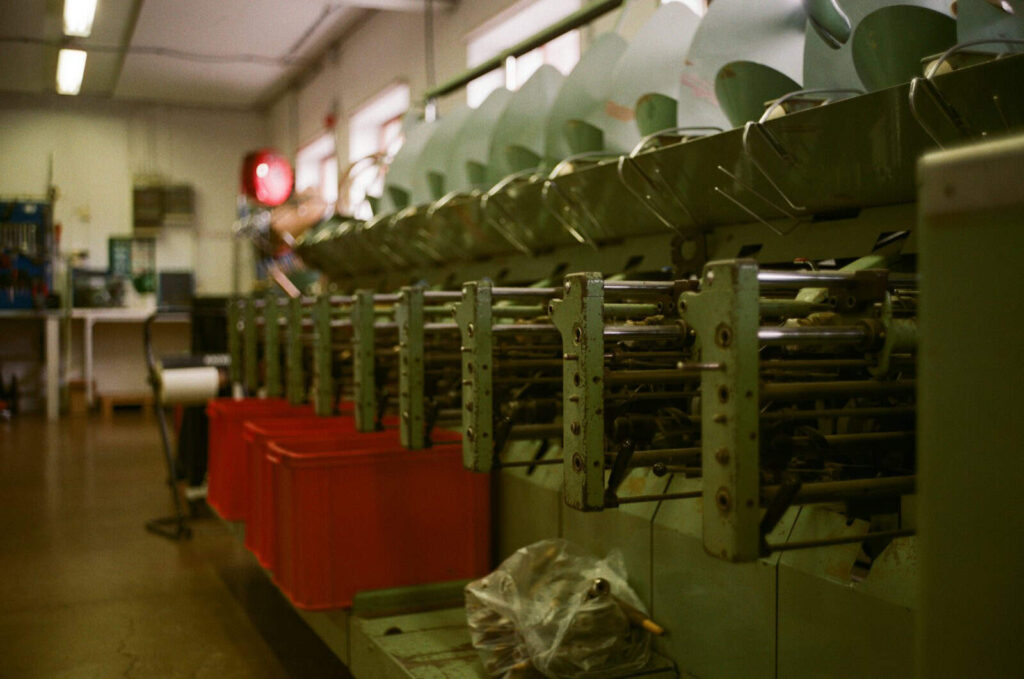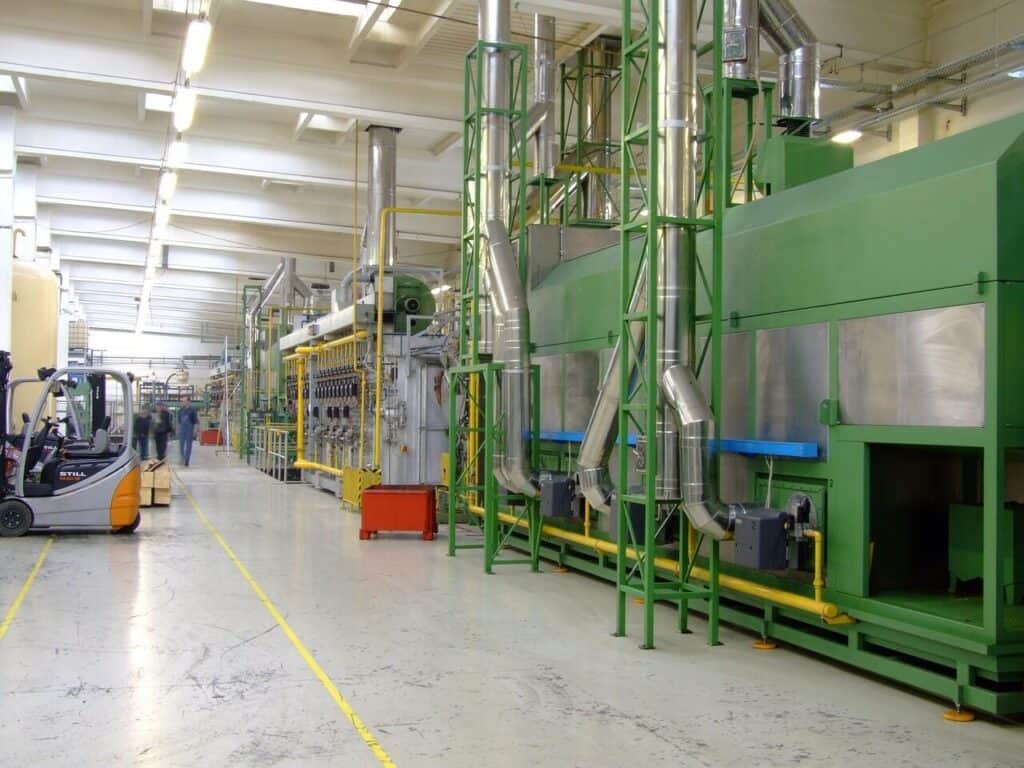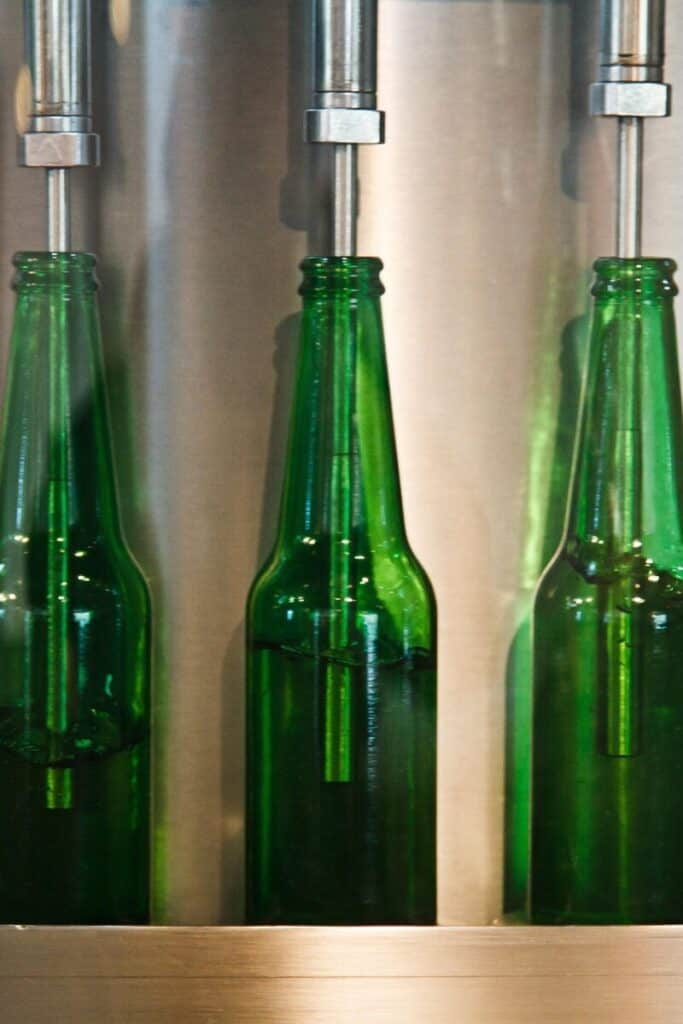The Engineer’s Guide to Filling Production: A Technical Analysis of Core Principles
Precision in filling production isn’t just nice to have. It’s the foundation of making money and protecting your brand. Every tiny drop of overfill costs you money. Every underfill risks getting in trouble with regulators and losing customer trust.
This guide goes beyond basic machine descriptions. We’ll break down the
core technical principles that drive modern filling operations. You’ll learn about fluid dynamics inside nozzles and control systems that ensure consistent results.
Our analysis rests on four key areas. First, the physical properties of your product. Second, how filling machines work mechanically. Third, the automation and control systems that provide the intelligence. Fourth, the practical science of fixing problems when they arise.
We’ll start with basic fluid physics and move to advanced sensors and automation. This knowledge will help engineers and production managers do more than just run machinery. You’ll be able to engineer a more efficient and reliable process.
Foundational Science: Product Properties
Any filling system’s performance depends first on the physical and chemical properties of the product itself. Understanding these basics is essential for picking the right technology and solving problems effectively.
Viscosity: Flow Resistance
Viscosity measures how much a fluid resists flowing. We put fluids into two categories. Newtonian fluids have constant viscosity regardless of force. Non-Newtonian fluids change viscosity under shear.
Water and thin oils are Newtonian. Many everyday products like ketchup are shear-thinning. Their viscosity drops when you shake them. Others, like cornstarch mixed with water, are shear-thickening.
This property directly affects which filling technology you choose. Low-viscosity products (around 1-100 cP) often work fine with simple gravity fillers. High-viscosity products like honey (around 10,000 cP) or pastes need the strong force of a positive displacement system, such as a piston filler.
Nozzle design matters too. High-viscosity fluids tend to create strings or tails after the fill cycle. This requires specialized nozzles with a clean, sharp cutoff mechanism.
Surface Tension & Foaming
Surface tension is the cohesive energy at a liquid’s surface. It helps the liquid resist external force. It controls how a liquid forms droplets and behaves when the nozzle cuts off.
Products with surfactants, like soaps and detergents, or dissolved gases, like carbonated drinks, foam easily when stirred up. Foaming adds air, which leads to wrong volumetric fills and spillage.
We use several technical solutions to reduce foaming. Bottom-up filling starts the nozzle near the container base and pulls back as the level rises. This reduces product agitation. We can also control fill speed precisely, using slower speeds at the beginning and end of the cycle. We design nozzles to create gentle, smooth flow.
Density and Specific Gravity
Density (mass per unit volume) is critical when choosing between volumetric and weight-based filling. For a volumetric filler to achieve consistent weight, the product’s density must stay absolutely consistent.
Products with natural density variations pose a big challenge for volumetric fillers. Think natural juices with pulp or products that change with temperature. A small density change creates a direct error in the final weight dispensed.
The relationship is simple:
For volumetric fillers, consistent density is essential for accurate weight.
For net weight fillers, product density variations don’t matter.
This makes net weight filling the better choice for expensive products or those with inconsistent physical properties.
Core Filling Technologies
Filling machinery falls into categories based on how it operates. We’ll analyze the main technologies, focusing on their mechanical action, best applications, and built-in limitations.
Volumetric Fillers
Piston fillers work like a large syringe. A piston pulls back in a cylinder, drawing in a set volume of product from a hopper. The piston then pushes forward, dispensing that exact volume into the container.
Diaphragm and peristaltic pump fillers offer gentler action. A peristaltic filler uses rollers to squeeze a flexible tube, moving the product without touching mechanical parts. This makes them perfect for high-purity pharmaceutical applications or products that damage easily under stress.
Timed flow fillers are the simplest volumetric type. They open a valve for a set time. The volume dispensed depends on flow rate and time. Their accuracy relies on perfectly constant pressure in the supply tank.
Level Fillers
Level fillers fill each container to the same visual height. This matters for products sold in clear containers where consistent appearance is important to consumers.
Gravity fillers are a common type of level filler. Product flows from an overhead tank into the container until the liquid reaches an overflow port height. Excess returns to the tank. They work best for low-viscosity, non-foaming liquids.
Pressure and vacuum fillers help flow slightly thicker liquids or handle specific container types. A pressure filler adds light air pressure to the supply tank to increase flow rate.
Net Weight Fillers
Net weight fillers are considered the gold standard for accuracy in filling production. They measure the product’s weight directly as it goes into the container.
The system uses a highly sensitive load cell, or strain gauge, positioned under the container. The PLC watches the real-time weight signal from the load cell. It closes the filling valve the instant the target weight is reached.
This method completely avoids errors caused by changes in product density, temperature, or trapped air. It also compensates for small differences in container weights.
Comparative Analysis
Choosing the right technology requires understanding these trade-offs clearly. The following table provides a direct technical comparison.
Technology | Operating Principle | Best For Viscosity | Typical Accuracy | Key Advantage | Common Applications |
Piston Filler | A precise volume is drawn into and dispensed from a cylinder. | Low to Very High | ±0.5% to ±1% | Highly versatile, handles particulates | Creams, gels, sauces, pastes |
Gravity Filler | Liquid flows from a bulk tank into containers via gravity until a set level is reached. | Low (Water-thin) | Level-based, not volume | Simple, cost-effective, easy to clean | Water, juice, wine, solvents |
Peristaltic Pump | Rollers compress a flexible tube to move a precise fluid volume. | Low to Medium | ±0.5% | Ultra-hygienic, no product contact with mechanicals | Pharmaceuticals, lab reagents, food flavorings |
Net Weight Filler | Load cells measure the weight of the product as it’s dispensed. | All Viscosities | ±0.1% to ±0.25% | Highest accuracy, independent of product/container variations | Bulk powders, expensive liquids, cooking oil |
The Science of Flow
Optimizing a filling line requires deeper understanding of fluid dynamics. These principles control how a product behaves as it moves from the tank, through the tubing, and out of the nozzle.
Laminar vs. Turbulent Flow
We often describe fluid flow using the Reynolds number. This dimensionless quantity predicts the transition from smooth to chaotic flow.
Laminar flow has smooth, parallel fluid layers. It’s the ideal state for filling because it reduces splashing, foaming, and air entrapment. This leads to a clean and accurate fill.
Turbulent flow is chaotic with eddies and swirls. It happens at high speeds or with sudden geometry changes. It’s a main cause of splashing and foaming.
Nozzle design is our primary tool for controlling flow. A long, gently tapered nozzle helps maintain laminar flow. In contrast, a sudden, wide-opening nozzle will almost certainly create turbulence.
Applying Bernoulli’s Principle
Bernoulli’s principle states that for moving fluid, increased speed happens at the same time as decreased pressure. We use this principle in several filling technologies.
Pressure-overflow level fillers use this concept to achieve exact visual fill heights. The nozzle seals against the container opening, and product is pumped in. When the liquid reaches a vent tube within the nozzle, the pressure difference pulls excess liquid back to the supply tank. This ensures perfectly consistent levels in every container.
Vacuum fillers use this principle in reverse. A vacuum is created within a rigid container. Atmospheric pressure on the product in the supply tank pushes the liquid into the container, filling it.
Mechanics of Positive Displacement
A closer look at positive displacement fillers shows sophisticated mechanical actions. In a piston filler, the process is a two-part sequence synchronized by a rotary valve.
During the intake stroke, the piston pulls back, creating a vacuum that draws product from the hopper as the rotary valve opens a path. On the discharge stroke, the valve rotates to connect the cylinder to the nozzle. The piston extends, forcing the exact volume of product into the container.
The peristaltic pump’s action is a gentle, progressive wave. The rollers move along the flexible tube, creating a moving pocket of fluid. This mechanism is exceptionally gentle. It prevents the high stress forces that can damage delicate emulsions, cell cultures, or other stress-sensitive products.
The Brains of the Operation
The Role of the PLC
The Programmable Logic Controller (PLC) is the industrial computer that coordinates every action on the filling line. It runs a pre-programmed logic sequence with microsecond precision.
A typical filling sequence in the PLC’s logic might look like this: confirm container presence, lower the filling nozzles, open the product valves, wait for the fill signal (from a timer, flow meter, or load cell), close the valves, and retract the nozzles.
The accuracy and repeatability of the entire operation depend on the precise timing and flawless logic programmed into the PLC.
Human-Machine Interface
The Human-Machine Interface (HMI) is the operator’s dashboard and control panel. It’s typically a touchscreen display that provides a window into the PLC’s operation.
From the HMI, an operator can select product recipes and adjust key parameters like fill volume or speed. They can also monitor production statistics. It’s also the primary tool for diagnostics, displaying alarms and guiding operators to the source of a problem.
The Eyes and Ears: Critical Sensors
Sensors provide the real-time data the PLC needs to make smart decisions. They are the eyes and ears of the automated system, turning physical events into electrical signals.
Sensor Type | Sensing Principle | Primary Function in Filling Line | Example of Use |
Photoelectric Sensor | Emits and detects a beam of light. | Container presence detection, indexing, and positioning. | A sensor confirms a bottle is in place before the nozzle descends. |
Load Cell | Measures force/weight via electrical resistance change (strain gauge). | Directly measures product weight in net weight fillers. | A load cell under the container signals the PLC to stop filling at 500g. |
Magnetic Flow Meter | Faraday’s Law of Induction; measures voltage induced by a conductive fluid. | High-accuracy volumetric filling of conductive liquids. | Precisely filling a set volume of fruit juice, regardless of flow rate changes. |
Level Sensor (Float, Ultrasonic) | Detects the liquid’s surface height. | Controls liquid level in the filler’s holding tank; used in level fillers. | An ultrasonic sensor maintains a constant product level in the gravity filler’s tank. |
From Theory to Reality: Troubleshooting
The real test of an engineer’s understanding is the ability to diagnose and solve problems on the production floor. This section provides a field guide to troubleshooting. It links common symptoms to their underlying technical causes.
A Systematic Approach
Effective troubleshooting follows a logical process. First, isolate the problem. Is it affecting a single filling head or the entire machine?
Next, check the simplest variables. Is the product supply tank empty? Is the compressed air supply at the correct pressure? Are all safety guards in place?
Common Problems and Solutions
Most filling issues can be traced back to a deviation from the core principles of mechanics, fluid dynamics, or control. The following table is a diagnostic starting point.
Problem / Symptom | Potential Technical Cause (Principle) | Recommended Solution(s) |
Inconsistent Fill Volumes | 1. (Volumetric): Worn piston seals or O-rings causing leakage. <br> 2. (Timed Flow): Inconsistent product pressure/head height in the supply tank. <br> 3. (Product): Air bubbles in the product stream displacing liquid. | 1. Inspect and replace seals; check for scratches in the cylinder. <br> 2. Install a level sensor and control loop for the holding tank. <br> 3. De-aerate product before filling; optimize pump speed to avoid cavitation. |
Product Foaming or Splashing | 1. (Fluid Dynamics): High fill velocity causing turbulent flow. <br> 2. (Mechanical): Nozzle is positioned too high above the container. | 1. Reduce the fill speed in the PLC/HMI, especially at the start of the fill. <br> 2. Use bottom-up fill nozzles that rise with the liquid level; adjust nozzle dive depth. |
Nozzle Dripping / Stringing after Fill | 1. (Mechanical): Worn or incorrect nozzle shut-off valve/seal. <br> 2. (Fluid Dynamics): High surface tension or viscosity causing “tailing”. <br> 3. (Control): Lack of a “suck-back” or “pull-back” function in the PLC program. | 1. Replace the nozzle tip seals; use a positive shut-off nozzle style. <br> 2. Use a nozzle with a sharper cutoff or a mechanical string cutter. <br> 3. Program a slight reverse action on the piston/pump at the end of the fill cycle. |
Inaccurate Net Weight Reading | 1. (Environmental): Air currents or vibrations from nearby equipment affecting the load cell. <br> 2. (Electrical): Electrical noise interfering with the load cell signal. <br> 3. (Mechanical): Product buildup on the scale or filling nozzle touching the container. | 1. Install draft shields around the weighing station; use vibration-dampening mounts. <br> 2. Ensure proper grounding and use shielded signal cables. <br> 3. Implement a regular cleaning schedule; verify nozzle-to-container clearance. |
The Future of Filling
The field of filling production keeps evolving. It’s driven by demands for greater flexibility, intelligence, and sustainability. We’re seeing several transformative trends emerge.
Robotics & Vision Systems
Robotic arms are increasingly being built into filling lines. They’re used not just for filling but for flexible container handling, capping, and case packing. This provides unmatched agility to handle diverse
product formats on a single line.
AI-powered machine vision systems are becoming standard for real-time quality control. These systems can instantly inspect for correct fill level, cap placement and torque, and label accuracy. They reject non-conforming products without slowing production.
IIoT & Predictive Maintenance
The Industrial Internet of Things (IIoT) is connecting machinery like never before. Sensors now monitor machine health parameters like vibration, temperature, and motor current in real-time.
This data powers predictive maintenance algorithms. According to industry analysis, this approach can reduce unscheduled downtime by up to 20% and lower maintenance costs by 10%. It does this by allowing teams to replace components before they fail. Cloud-based platforms can then analyze this data across an entire enterprise to optimize performance globally.
Sustainability & Aseptic Filling
Sustainability is a major driver of innovation. New filling technologies are being developed to handle challenging, eco-friendly packaging materials. These include thinner recycled plastics or compostable containers, which may lack the rigidity of traditional packaging.
At the same time, advances in aseptic and sterile filling technologies are enabling longer shelf life for food and pharmaceutical products. They do this without needing chemical preservatives. This meets strong consumer demand for “clean label” products and reduces food waste.
Conclusion: Mastering Production Mechanics
Mastering filling production is an exercise in applied engineering. It requires understanding how product properties, mechanical forces, fluid dynamics, and control systems work together.
This technical knowledge creates a critical shift. You move from a reactive state of troubleshooting problems to a proactive state of process optimization and intelligent system design.








